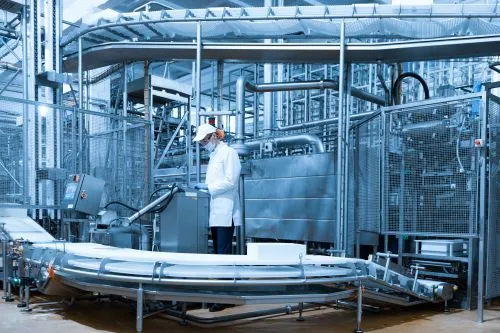1238

According Euractiv, member states of the European Union have spent billions of euros to support agricultural and food industries over the past two years, following a temporary relaxation of the bloc's state aid rules to help businesses cope with the impact of the Russia-Ukraine war.
Poland leads, Romania ranks fourth
An analysis conducted by Euractiv of available EU data on state aid directly targeting the agri-food sector revealed significant disparities between member states.
Poland leads with almost 4 billion euros in public subsidies for agri-food, especially the cereal sector, followed by Italy (2.3 billion euros), France (1 billion euros), and Romania (770 million euros).
Under the first scheme adopted by the European Commission in March 2022, the Temporary Crisis Framework (TCF), member states could allocate up to 35,000 euros to companies active in the primary production of agricultural products.
The aid ceiling was higher for other sectors, including food processors and fertilizer producers, which could receive up to 400,000 euros in public subsidies from direct subsidies, tax breaks, payment advantages, guarantees, and loans. In March 2023, the initial scheme was transformed into the Temporary Crisis and Transition Framework (TCTF).
Upward changes
The latest amendment to the TCTF in November 2023 increased the ceiling to 280,000 euros per farm, 335,000 euros for companies active in the fishing sector, and a maximum of 2.25 million euros per company in other sectors.
The revised version of the scheme also extended temporary state aid measures, including for agriculture and fishing, until the end of June 2024, citing "uncertainty" caused by ongoing geopolitical tensions.
However, their removal is expected to be further delayed, as indicated in the conclusions of the latest EU leaders' summit in Brussels on March 21-22, which suggested an extension of the temporary framework "to ease the financial pressure on farmers."
A few days later, on March 26, EU Agriculture Commissioner Janusz Wojciechowski confirmed that the Commission is preparing a proposal to extend the TCTF again, stating that state aid is "absolutely necessary" in the current "unusual circumstances."
"Of course, in the long run, this is not a good solution, as it can create market inequalities," he warned.
The data does not include so-called de minimis aid, small amounts considered not market-distorting that national authorities can allocate directly without notifying the Commission. For agriculture and fishing, the de minimis threshold was raised to 20,000 euros and 30,000 euros per enterprise, respectively, starting January 1, 2024. For other sectors, it is set at 300,000 euros.
Italy follows the Poles
Poland becomes the largest spender in state aid for the agricultural sector, offering 4 billion euros in government subsidies during the crisis.
In 2023, Warsaw nearly matched its state aid, totaling 3 billion euros, the amount it allocated to direct payments to farmers under the Common Agricultural Policy (CAP) reaching approximately 3.6 billion euros.
Euractiv's analysis also revealed a strategic timeline: most packages of state aid for agriculture were approved before the parliamentary elections on October 15, 2023. Over 2.5 billion euros received the Commission's green light in the last five months.
Wojciechowski, whose party, Law and Justice (PiS), needed crucial support from rural voters for reelection, publicly boasted of the billions of euros in aid for farmers approved by the EU executive.
A considerable part of Polish aid was directed towards cereal producers in an attempt to address growing farmer dissatisfaction fueled by an increase in cheap imports from Ukraine and a decrease in cereal prices.
Meanwhile, Italy, a EU agricultural powerhouse, allocated 2.3 billion euros to agriculture, mainly through "umbrella schemes" targeting a wide range of sectors including agriculture, animal husbandry, fishing, and aquaculture. Most of its state aid schemes received Commission approval between April and December 2022.
Buying an exit from protests?
Following farmers' protests, Romania has also granted large sums of aid to the agricultural sector, primarily benefiting animal breeders, beekeepers, and fruit and vegetable growers.
The Commission approved six different Romanian support schemes totaling over 526 million euros in February and March, following a wave of disturbances that began on January 10.
Similarly, Bulgaria, one of the largest spenders of state aid for agriculture, received the green light in March for two envelopes targeting farmers from multiple sectors worth 170 million euros.
The country witnessed nationwide protests in February, with farmers demanding more subsidies and compensation for producers affected by increased agricultural imports from Ukraine.
Meanwhile, Poland's new government, led by Donald Tusk's center-right party, followed the same playbook as the previous administration.
In December 2023, Warsaw requested Commission authorization to distribute 230 million euros to corn producers to calm farmers and overcome the blockade at the border crossing point with Ukraine.
France prefers organic products
While France has also used state aid funds to appease protesting farmers, it has done so in a more targeted manner.
In March, Paris was authorized by the Commission to support organic farmers through a 90 million euro scheme in the form of direct grants.
In January, faced with farmer anger, French Prime Minister Gabriel Attal promised 50 million euros in support for organic farmers due to the slowdown in sales of chemical-free food in 2021.
Marc Fesneau, the French Minister of Agriculture, announced at the International Agricultural Show in February, one of the world's largest agricultural fairs, that the initial amount would be increased to 90 million euros, adding that "organic farming is a subject that keeps our hearts."





